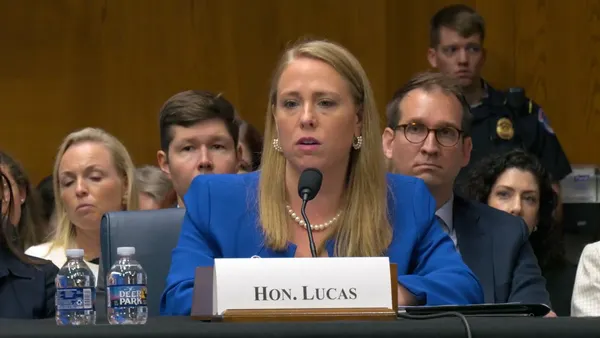WASHINGTON — Improving accessibility, affordability and quality will be key to addressing the nation's "hodgepodge" of healthcare systems, Tom Price, former U.S. Secretary for Health and Human Services (HHS), told an audience of payers, care providers and employer representatives Tuesday.
Given the number of different care systems and the different sets of rules governing each, "it's no wonder why we find ourselves in such a mess," Price said in remarks delivered at World Health Care Congress 2018. "I would suggest however that it's a huge opportunity ... if we could just harmonize much of the mechanisms and the systems that we have, imagine the efficiencies and that we could gain within the system, and imagine hopefully the better experience that patients would have."
But Price, one of several panelists and speakers at the 2018 World Health Care Congress, merely hinted at the surface of deep, systemic issues in healthcare that affect all populations — including employers.
Frustrations and solutions
Multiple drivers of healthcare dissatisfaction were discussed during sessions on Monday and Tuesday, ranging from fee-for-service pricing models that don't focus enough on patient outcomes and preferences, to disconnected information systems.
Attempts to change the current paradigm to one that places more value on patient outcomes (also known as value-based care) face an obvious challenge.
"Our market share is on patient beds," Karen Springer, president of healthcare operations for Ascension Healthcare, said at a panel Monday. Hospitals are focused on patient volume as an indicator of profitability, even though an increasing prevalence of chronic conditions in the U.S. means patients need other treatment options to keep them out of hospitals. "We have to be responsible for changing that dynamic," Springer said.
In the meantime, payers are realizing that traditional industry cost-shifting practices, in which hospitals shift higher costs onto patients with insurance, is "absolutely unsustainable," said Phil Jackson, CEO of health plan products at Sacramento-based Sutter Health during the panel with Springer.
"We need a much a faster transformation," Jackson said, citing a need for measures like walk-in clinics and workplace visits as new ways to deliver care and educate consumers.
The role of employers
Worksite clinics are one example of how employers can bring care delivery outside the walls of the hospital. Though not exactly a new or cheap concept, on-site clinic operations can improve workers' overall experience with the healthcare system and even confer business benefits by reducing attrition, Gale Adcock, chief health officer at SAS Institute, said during a presentation.
The operations at SAS are fairly comprehensive, providing everything from traditional primary care to a walk-in pharmacy and even a lab for examining biological samples. The company originally jumped from an urgent care model to a primary care one 23 years ago, Adcock said, but even a less comprehensive on-site clinic model can deliver results.
"Primary care is the bread and butter of what we do," Adcock said, "if you don't spend enough time on it, you'll spend way too much on specialty care."
Employers are also exploring direct contracting relationships with providers to improve employee access to centers of excellence. The reason: "A third of what we spend is literally wasted, and our employees' lives are no better for it," said Marcus Osborne, VP of health and wellness transformation at Walmart, on a panel.
Osborne said Walmart deliberately seeks out nationwide centers of excellence for expensive procedures like spinal care, covering the cost of both the procedure and travel incurred for it as well as follow-up measures like physical therapy. But the key is to prevent unnecessary procedures that end up harming employees in the long run.
"If you're not assessing appropriateness and quality, you're not looking at the full picture," Osborne said.
Correction: This story has been updated in order to clarify Jackson's comments on the participation of employers and other non-hospital parties in improving healthcare delivery.














